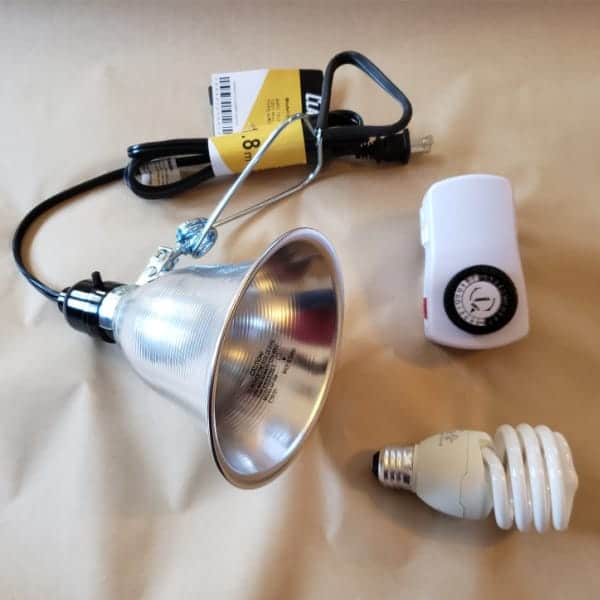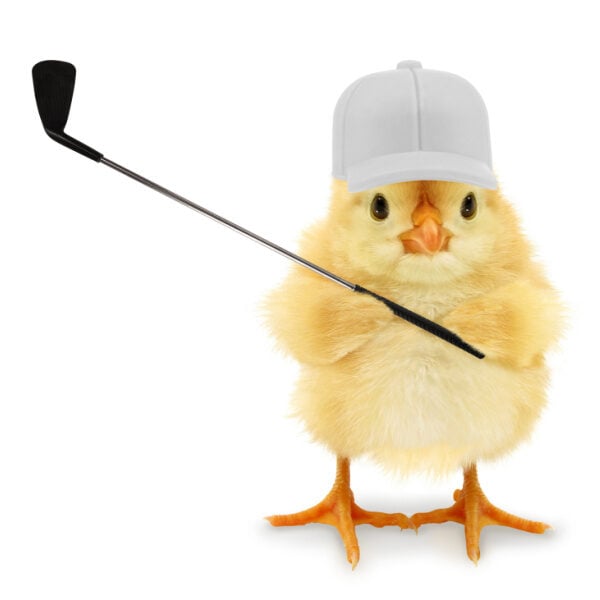
Should I Be Concerned My Peach-faced Lovebird Made an Egg?
Last Updated on by Mitch Rezman
Unfertilized, she has no mate.
Yesterday my lovebird was a tiny velociraptor defending her nest, and I’ve been watching her ‘egg bum’ for a couple of days, now.
This morning she was bouncy and happy, apparently relieved of her butt burden, but this is not over, her bum is still looking eggy. Lovebirds usually have 5 eggs in a clutch..?
I’m just concerned about egg-binding. I’ve lost birds to that and it’s just horrible. What can I do to help her through this process safely?
Julie O
Hi Julie,
It sounds like an egg may have broken internally – a trip to the vet would be in order to rule that out.
Best of Luck
Mitchr
Julie O replied
I don’t think she has any eggs broken inside of her, I believe she just has another egg brewing.
The first egg is unbroken and perfect, and I’ve seen no indication of straining or discomfort, just another little bump near her vent that looks like she’s busy manufacturing another one.
This is her first egg experience, she’s about 3 or 4 years old (we’re not sure because she was rescued almost dead from a busy city street in 2016 and the vet said she was either small from malnutrition or just a juvenile).
Her poops are monumental, and she is still bouncy and happy, just SERIOUSLY defensive over her chosen nest space.
She really isn’t hovering too much over the one she already laid; she pushes it around a little bit, but she will attack if we get too close.
Her appetite is normal and she is still very playful and vocal. About an hour after she had that first egg, she was hanging on the side of the cage like a monkey and banging her favorite bell against the bars, and yelling her name as she does every morning.
I called our vet and they said if she gets logy, cannot poop, or appears to be straining even a little bit we are to bring her in, but she said it sounds like Kiki is doing fine and is progressing through her first egg adventure normally.
She suggested since she has already started laying (even though she was put on a 10-hour day / 14-hour night schedule when she started acting romantic with my husband, and we removed anything that even vaguely resembled a cave or nest from her cage) that we make a little shallow nest-bowl area where she laid the first egg and get dummy eggs for her to sit on until she loses interest.
The vet said to put 5 or 6 dummy eggs in the nest bowl and remove any eggs she created, and she will see a “full clutch” of “eggs” and that will turn off her laying mechanism. After 3 weeks or so of sitting on them without any hatching, she should lose interest and then we can take them out. In the meantime, we are to remove any further eggs she may have and make sure she gets extra calcium and veggies and plenty of out-of-cage play time – which will also offer us the opportunity to swap eggs and clean the cage without losing a finger.
She gave me this website for dummy eggs and they arrived this afternoon. (www.dummyeggs.com).
Thanks!
Julie
To: Julie O
Please do not use the dummy eggs. Avian veterinarians get it wrong more than you would think. There are anecdotal stories of how they (dummy eggs) work or not.
All they do is perpetuate your birds urge to make more babies
PLEASE READ THIS – we’ve had a bird in a very similar situation
We need to break your bird’s circadian rhythm so that the chronic egg-laying stops.
Using light therapy is not something that we simply read on the Internet. It is promoted by Gregory Harrison the founder of Harrison’s bird food.
We are also in regular contact with https://hari.ca/hari/research-facility/ who works hand-in-hand with https://ovc.uoguelph.ca/
The two organizations combined have convinced us beyond a shadow of a doubt that the light cycle is the most efficient and benign treatment for chronic egg layers.
If your veterinarian proposes a series of lupron injections which is common in these cases – RUN, it’s poison
Light cycle therapy will fix this.
It might take a second attempt but we have shown repeatedly that we can shut down a brooding hen using light cycles.
You also want to be vigilant in recognizing that your bird may go into a molt which will draw additional caloric resources already stretched thin by the egg production which could have negative consequences on your bird’s overall health.
Follow our advice and we will solve your problem
Best of luck
My avian vet is strongly against Lupron, she mentioned it when I first called because she thought I was calling to ask for it, and I said no way.
I’ve been given the drug myself and it was horrible, I cannot imagine how much it would hurt something as tiny as a lovebird.
I received the package of dummy eggs today, but I will follow your advice and do the light therapy treatment.
I did see on Harrison’s article page that he mentioned the dummy eggs first in the list of things to try.
As this is Kiki’s very first clutch of eggs, I must say it’s too soon to determine if she is going to be a chronic egg machine.
She isn’t particularly cuddly normally, and most of our play time has been hands off because she has exhibited somewhat of a fear of hands from the very beginning; we suspect she may have been abused or roughly handled before she came to us and so we respect her boundaries. So she was not triggered into laying by inadvertent sexual play with us.
We did get a doggy grass mat for her to forage in and the first thing she did was masturbate on it – could that have triggered the egg cycle? It was about 10 days before the first egg showed up.
Hi Julie
It’s hard to say if the artificial turf was a trigger.
Regarding the dummy eggs in Harrison’s article, that information is older and subject to conjecture.
I’ve been polling veterinarians and it’s amazing that they all say the same thing.
We don’t know if it’s light or dark that triggers brooding activity”
We know it’s the darkness because that’s where parrots go to have babies, deep hollows of trees and under rocks. With the exception of the Quaker parrot, parrots don’t build nests on trees.
Full Spectrum Economy Daylight Bulb with Clamp Light & Timer
The dark hollow of a tree is a comfy place to make babies.
As far as the lighting time you are using, we recommend that you go to 12 hours light on and 12 hours light off on a timer. Increased darkness can lead to more broody behavior.
Best of luck on the light therapy please keep us posted.
MitchR
Author Profile
Latest entries
 The Traveling BirdJune 26, 2025Can You Name 5 Parrot Species That Are Living Wild in the USA?
The Traveling BirdJune 26, 2025Can You Name 5 Parrot Species That Are Living Wild in the USA? Bird BehaviorJune 26, 2025How is it Parrots Are Problem Solvers Social Animals and Even Use Tools?
Bird BehaviorJune 26, 2025How is it Parrots Are Problem Solvers Social Animals and Even Use Tools? Bird & Parrot AnatomyJune 25, 2025How a Tiny Chemical Modification Makes Parrots Nature’s Living Paintings
Bird & Parrot AnatomyJune 25, 2025How a Tiny Chemical Modification Makes Parrots Nature’s Living Paintings PigeonsJune 20, 2025How Do Parrots Thrive in Cities Outside Their Native Habitats?
PigeonsJune 20, 2025How Do Parrots Thrive in Cities Outside Their Native Habitats?



